Touching Story Behind The Photo Of 3-Year-Old Girl Holding A Blinded British Soldier
World War I, called the Great War, was a terrible global fight from 1914 to 1918. It changed the world and hurt many people. Thousands of brave soldiers fought in it. But for some, the hard part came after the war.
When the fighting ended, many soldiers came home hurt, both in body and mind. Some couldn’t see anymore. Especially in Britain, thousands of soldiers lost their sight and that changed their lives forever.
Numerous photos capturing moments of their lives after they became blind serve as evidence of the war’s consequences. One of the most touching images is that of a young girl holding the hand of a blinded soldier.
Ruby’s sweet gesture
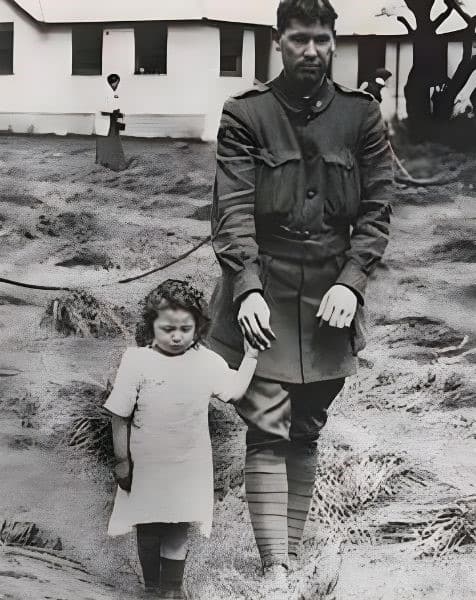
The little girl in the photograph is Ruby Alice Crane. Born on July 26, 1912, in Kingston, Surrey, England, she was the daughter of George Crane and Alice Burroughs, both of whom were the same age.
At age 3, Ruby was often at a rehabilitation center called St Dunstans at Brighton in Sussex, where Ruby’s father was the head gardener.
The moment she walked blind soldiers around there was captured and it is believed that it was not the first time.
Despite being a child, Ruby understood that these soldiers had lost their sight during the First World War.
When she spotted them wandering in the grounds, Ruby would reach out to hold their hands and inquire about their destination, guiding them there with care and compassion.
Ruby’s simple act of walking with the blind soldiers deeply touched people there. They sent her dolls and toys as a thank you for her support to the men and women affected by sight loss.
It seemed her kindness was rewarded with a long and fulfilling life, spanning into her late nineties until her passing in 2011. In her later years, she fondly reminisced about her time with the soldiers.
Ruby recalled, “I always remember how my little hand seemed so small in their big hands….they were so pleased to have a child come and talk to them….it was something different away from the monotonous grind of not being able to see things, I think.”
Countless soldiers blinded by World War I
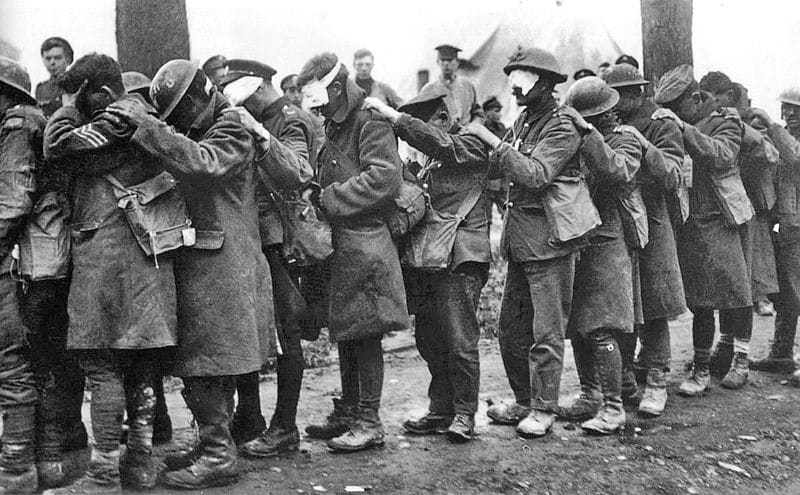
Looking at the images of tens of thousands of British soldiers returning home blinded after WWI, you can understand why a 3-year-old girl like Ruby could feel such empathy and compassion for them.
It is true that the terrible global human cost of World War I was devastating, with an estimated 9.5 million dead and 20 million injured.
In Britain alone, nearly 1 million soldiers, sailors, and airmen lost their lives, while around two million returned home with disabilities. Among them were over 40,000 amputees, along with many who suffered from facial disfigurement, blindness, deafness, tuberculosis, or lung damage caused by poison gas.
The horrors of warfare also took a toll on soldiers’ mental health. Thousands experienced shell shock, a condition diagnosed today as post-traumatic stress disorder. The impact of the war was immense, leaving countless individuals and families grappling with its lasting consequences.
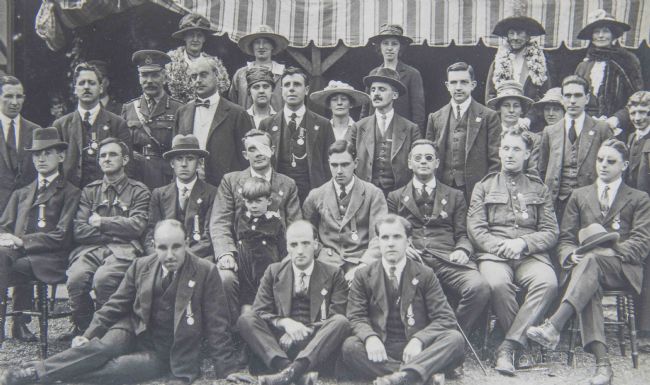
When it comes to sightless soldiers in Britain, around 30,850 men were discharged from the British Army during World War I due to damaged or defective eyesight.
Among these soldiers, nearly two thousand were fully blind, while many others experienced worsening eyesight over time due to exposure to gas. These soldiers were typically young, fit, and healthy before their blindness, which was not a result of being born blind, illness, or old age, but rather from the harsh realities of war.
Women were also affected by blindness, whether through war service or accidents in munitions factories. Despite the expectation of facial disfigurement from the impact of metal on flesh, in many cases, it was only the eyes that were affected by these traumatic events.
A charity for blinded servicemen founded at that time
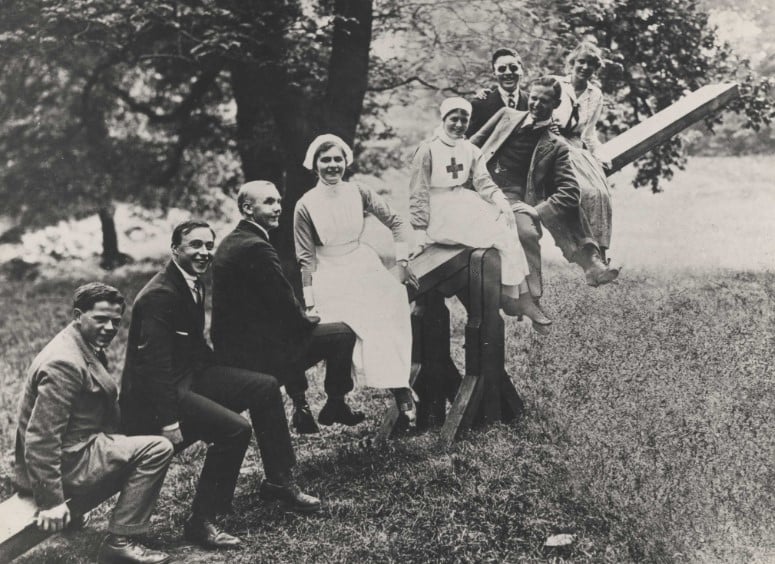
Despite being blind, it seemed to take their smiles forever. This lovely image of members of St. Dunstan’s relaxation with VADs proved this.
Sir Arthur Pearson, author of Victory Over Blindness and the founder of the Daily Express newspaper, empathized deeply with the challenges faced by blind servicemen.
He was losing his sight due to glaucoma, but when advised to give up his business, he had vowed, ‘I shall soon be blind but I will never be a blind man, I am going to be the blind man.’
In 1914, Pearson established St. Dunstan’s Hostel for Blind Soldiers and Sailors, later relocating it to a property in Regent’s Park. It was a place where ex-servicemen could receive vocational training and support after hospital treatment, empowering them to “learn to be blind” and lead independent lives.
The Blinded Soldiers and Sailors Care Committee aimed to provide vocational training rather than charity. Their goal was to equip blinded servicemen and women with the skills needed to live independently and contribute meaningfully to society.
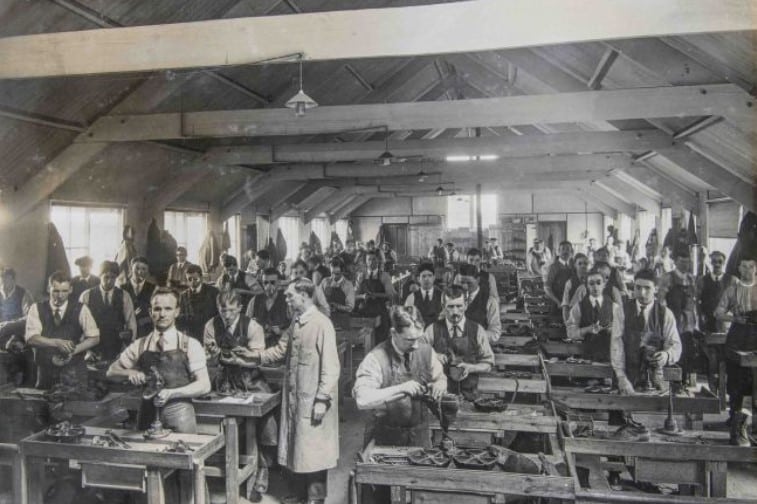
Members received training in Braille and typewriting to prepare for future occupations, as mentioned in the charity’s 1916 Annual Report. They learned skills like boot-repairing, mat and basket-making, joinery, poultry-farming, market gardening, and massage. Social activities such as sports, dancing, and debates were also essential for their rehabilitation.
Over time, St Dunstan’s expanded its activities across the UK. Today, known as Blind Veterans UK, it continues to support visually impaired ex-service members nationwide, offering care and assistance to those who lost their sight during or after their service.

